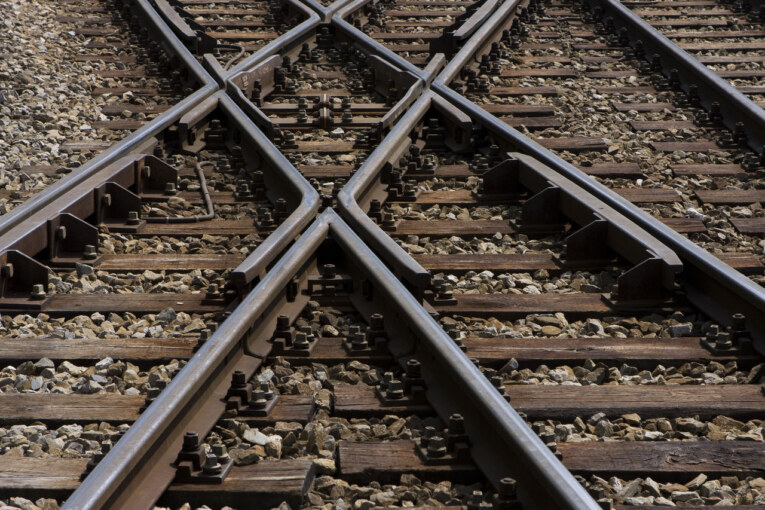
Question No 1: Wing rails are provided..
A: Near tongue rails
B: Near check rails
C: Near stock rails
D: In crossing
Question No 2: Wing rails are provided..
A: Near tongue rails
B: Near check rails
C: Near stock rails
D: In crossing
Question No 3: Burnettising is done for the preservation of..
A: Wooden sleepers
B: Rails
C: Ballast
D: None of these
Question No 4: 30m long rails are used in
A: India
B: Pakistan
C: Russia
D: U.S.A.
Question No 5: Minimum gradient in station yards is generally limited to..
A: 1 in 1000
B: 1 in 750
C: 1 in 500
D: 1 in 400
E: Zero
Question No 6: If n is length of a rail in meters, the number of sleepers per rail length generally varies from..
A: n to (n+2)
B: (n+2) to (n+4)
C: (n+3) to (n+6)
D: (n+4) to (n+5)
Question No 7: For inspection and packing of ballast, each pot sleeper is provided with..
A: One hole
B: Two holes
C: Three holes
D: Four holes
Question No 8: Each block of a two-block concrete sleeper is..
A: 722mm x 295mm x 271mm and 215kg in weight
B: 250mm x 154mm x 196mm and 260kg in weight
C: 525mm x 350mm x 275mm and 280kg in weight
D: None of these
Question No 9: The effective bearing area of all types of sleepers, is..
A: 0.40 m2
B: 0.42 m2
C: 0.44m2
D: 0.46 m2
E: 0.50 m2
Question No 10: For points and crossings, maximum size of ballast, is
A: 50 mm
B: 40 mm
C: 30 mm
D: 25 mm
E: 20 mm
Answers Here
- D
- D
- A
- D
- E
- C
- B
- A
- D
- D


